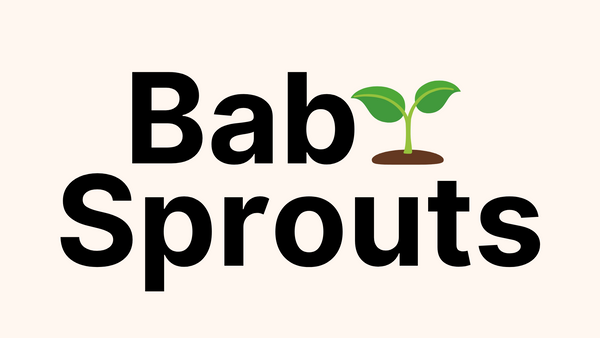
Comparing Baby Teething Rings, Bum Brushes, and Oral Cleaners: Which is Best?
Understanding the Role of Teething Rings in Baby Care
The Importance of Choosing the Right Teething Ring
Choosing the right teething ring is crucial for your baby's comfort and development. A good teething ring can soothe sore gums and provide relief during the teething process. It's important to select a safe, durable, and appropriate ring for your baby's age and stage of teething.

When picking a teething ring, consider factors like material, size, and texture. Look for rings made from safe, non-toxic materials that are easy to clean. The size should be suitable for your baby's hand and mouth. Textured surfaces can provide extra relief for sore gums.
Remember, each baby is unique. What works for one may not work for another. Be prepared to try different types of teething rings to find the best fit for your little one.
How Teething Rings Can Soothe Babies' Gums
Teething rings offer several benefits for babies experiencing discomfort from teething. They provide a safe object for babies to chew on, which can help relieve pressure and pain in their gums. The act of chewing can also help teeth break through the gums more easily.
Many teething rings can be chilled, offering extra relief for sore gums. The cold temperature helps numb the area and reduce inflammation. Some rings have different textures or parts that can massage the gums, providing additional comfort.
Teething rings also serve as a distraction, helping to take your baby's mind off the discomfort of teething. They can keep your baby occupied and content during this challenging phase of development.
The Different Types of Baby Teaching Rings Available
There are several types of teething rings available in the market today. Here's a list of common options:
- Solid silicone rings: These are durable and easy to clean.
- Water-filled rings: Can be chilled for extra soothing power.
- Wooden teething rings: Natural and eco-friendly option.
- Textured rings: Offer different surfaces for babies to explore.
- Teething necklaces: Worn by parents but designed for babies to chew on.
- Fruit-shaped teethers: Often made of soft silicone and visually appealing.
- Combo teether-rattles: Provide both teething relief and entertainment.
Each type has its own benefits and drawbacks. Consider your baby's preferences and needs when choosing a teething ring.
Evaluating the Effectiveness of Teething Rings Against Bum Brushes and Oral Cleaners
Pros and Cons of Using Teething Rings for Oral Care
Teething rings offer several advantages for oral care. They are easy to use and can be given to babies to chew on independently. This helps develop motor skills and provides a sense of comfort and control for the baby.

Teething rings can also help stimulate saliva production, which is beneficial for oral health. They come in various shapes and sizes, allowing you to find one that suits your baby's needs and preferences.
However, teething rings are not a complete solution for oral care. They don't clean teeth or gums directly. Some babies may lose interest in them quickly. There's also a risk of overuse, which could potentially affect tooth alignment.
The Impact of Bum Brushes on Babies' Teeth and Gums
Bum brushes, also known as finger toothbrushes, offer a different approach to oral care. They allow parents to directly clean their baby's gums and emerging teeth. This can be more effective in removing food particles and plaque.
Bum brushes are designed to be gentle on baby's gums. They can provide a soothing massage, which may help with teething discomfort. Using a bum brush also helps establish a regular oral care routine from an early age.
However, some babies may not enjoy having something put in their mouth. It requires more active involvement from parents, which can be challenging with a fussy baby. There's also a learning curve in using them effectively.
How Oral Cleaners Can Complement Teaching Ring Use
Oral cleaners, such as baby toothpaste and mouthwashes, can work well alongside teething rings. They provide additional cleaning and protection for your baby's emerging teeth and gums.
Baby-safe toothpaste can be used with a soft brush or cloth to gently clean gums and teeth. This helps remove bacteria and food particles that teething rings can't reach. Some oral cleaners also contain ingredients that soothe sore gums.
Combining teething rings with oral cleaners provides a comprehensive approach to oral care. Teething rings offer comfort and distraction, while oral cleaners ensure proper cleaning and hygiene.
Choosing the Best Teething Ring for Your Baby
Criteria for Selecting a Teaching Ring
When choosing a teething ring, consider these important factors:

- Safety: Ensure the ring is made from non-toxic materials and has no small parts.
- Size: It should be easy for your baby to hold and manipulate.
- Texture: Look for varied textures that can provide different sensations.
- Durability: The ring should withstand constant chewing without breaking.
- Ease of cleaning: Choose rings that are easy to wash and sterilize.
- Temperature options: Some rings can be chilled for extra relief.
- Age appropriateness: Select rings suitable for your baby's stage of development.
Consider your baby's preferences and needs when making your choice. What works for one baby may not work for another.
Tips for Using Teaching Rings Safely
To ensure safe use of teething rings, follow these guidelines:
- Always supervise your baby when using a teething ring.
- Regularly check the ring for signs of wear and tear.
- Clean and sterilize the ring frequently.
- Don't tie the ring around your baby's neck or crib.
- If using a chilled ring, make sure it's not too cold to avoid hurting your baby's gums.
- Replace the ring if it shows any signs of damage.
- Avoid rings with liquid fillings that could leak if punctured.
Remember, teething rings are meant to provide comfort, not replace proper oral care routines.
When to Consider Switching to Other Oral Care Products
As your baby grows, their oral care needs will change. Here are signs it might be time to introduce other products:
- When teeth start to emerge, consider introducing a soft baby toothbrush.
- If your baby loses interest in teething rings, try different textures or shapes.
- As your baby becomes more active, consider products that are easier to hold onto.
- When your baby can follow simple instructions, start teaching proper brushing techniques.
- If teething rings aren't providing enough relief, consult your pediatrician about other options.
Remember, every baby is unique. Stay attentive to your baby's needs and preferences as they grow and develop.
